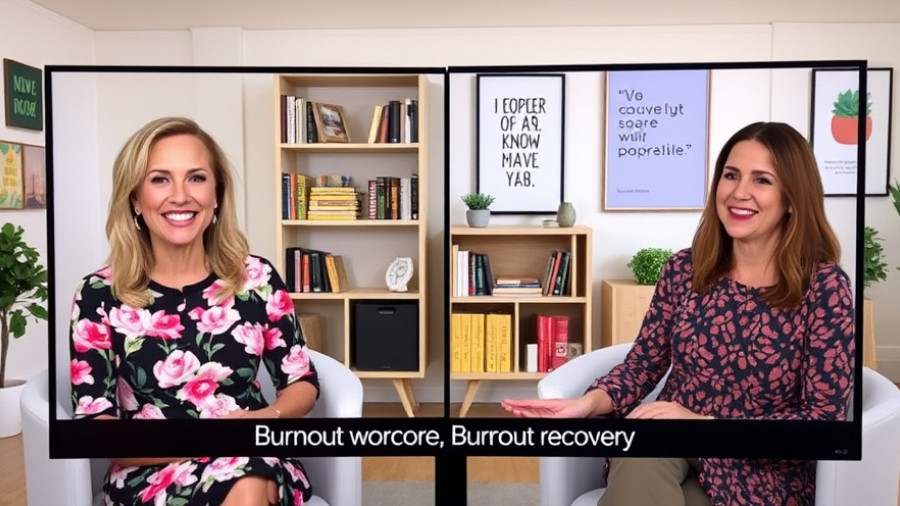
Navigating the Burnout Maze: Understanding and Recovery
In today’s fast-paced work environment, burnout has become an all-too-common experience that affects professionals across various industries. It’s not just occasional stress; it’s a state of chronic emotional, physical, and mental exhaustion that manifests when demands exceed the ability to cope. Recent studies indicate that while many individuals endure burnouts, nearly half feel their employers lack adequate plans to support them through these challenging periods.
Recognizing the Signs of Burnout
Identifying burnout early can make a significant difference in recovery efforts. Symptoms can include constant fatigue, irritability, a sense of detachment, and diminished job satisfaction. For many, these stages are subtle at first but escalate over time. Symptoms often fall into three categories: physical (chronic fatigue and frequent illnesses), emotional (increased cynicism and detachment), and behavioral (withdrawal from responsibilities and social interactions).
According to stages outlined in research by occupational psychologists, burnout can progress through clear phases. Initially, individuals may feel an overwhelming need to succeed—a phase often referred to as the **Honeymoon Phase**. This excitement can quickly transition into chronic stress, leading to pessimism and, ultimately, a feeling of being overwhelmed.
Unpacking the Phases of Burnout
Understanding the stages of burnout can help employees pinpoint where they stand in the burnout journey and take proactive steps. A simplified model outlines five stages:
- Honeymoon Phase: Initial enthusiasm and commitment, accompanied by high productivity.
- Stress Onset: As stress builds, individuals begin neglecting self-care, leading to anxiety and fatigue.
- Chronic Stress: The cynicism settles in, causing withdrawal from coworkers and other social connections.
- Burnout: A damaging state where hope diminishes, leading to serious health issues.
- Habitual Burnout: This stage prevails if the situation is not addressed, resulting in depression and a sense of being unfulfilled.
How to Effectively Recover from Burnout
Recovering from burnout is not as simple as taking a few days off; it often requires a multi-faceted approach. The “Three R’s” strategy—recognize, reverse, and build resilience—offers a roadmap:
- Recognize: Acknowledge the signs and symptoms of burnout. Self-awareness is crucial in guiding recovery efforts.
- Reverse: Take active steps to manage stress. This can include consulting with a therapist, setting boundaries at work, or even changing the work environment altogether.
- Resilience: Develop stress management techniques such as regular exercise and mindfulness practices, which are essential in building a stronger mental health foundation.
Actionable Tips for Preventing Burnout
While recognizing and addressing burnout stages is vital, it’s equally important to implement preventative measures:
- Social Connections: Connecting with others can significantly reduce feelings of isolation. Engaging with friends, family, and even coworkers fosters a support network that serves as a buffer against stress.
- Healthy Lifestyle Choices: Regular exercise and a balanced diet can positively influence mood and energy levels. Consider incorporating 30 minutes of daily exercise, even if it’s just a brisk walk.
- Take Breaks: Stepping away from the workplace, even for brief moments, can help recharge one’s mental state. Scheduling regular breaks throughout the day is crucial.
The Path Ahead: Building a Sustainable Work-Life Balance
Remember that recovery from burnout is not linear—it requires time and patience. For many, it is essential to also reassess personal and professional boundaries; defining limits around work responsibilities allows for a healthier balance. Setting aside dedicated time for relaxation or hobbies can help restore joy and motivation.
By recognizing the signs of burnout and taking active steps toward recovery, professionals can regain their spark and enhance their overall well-being. If you find yourself identifying with these stages, reach out for support and take the necessary steps towards healing.
Invest in your mental health today. Recognize the importance of self-care and make a commitment to your well-being—because you deserve to thrive, not just survive!
 Add Row
Add Row  Add
Add 




Write A Comment